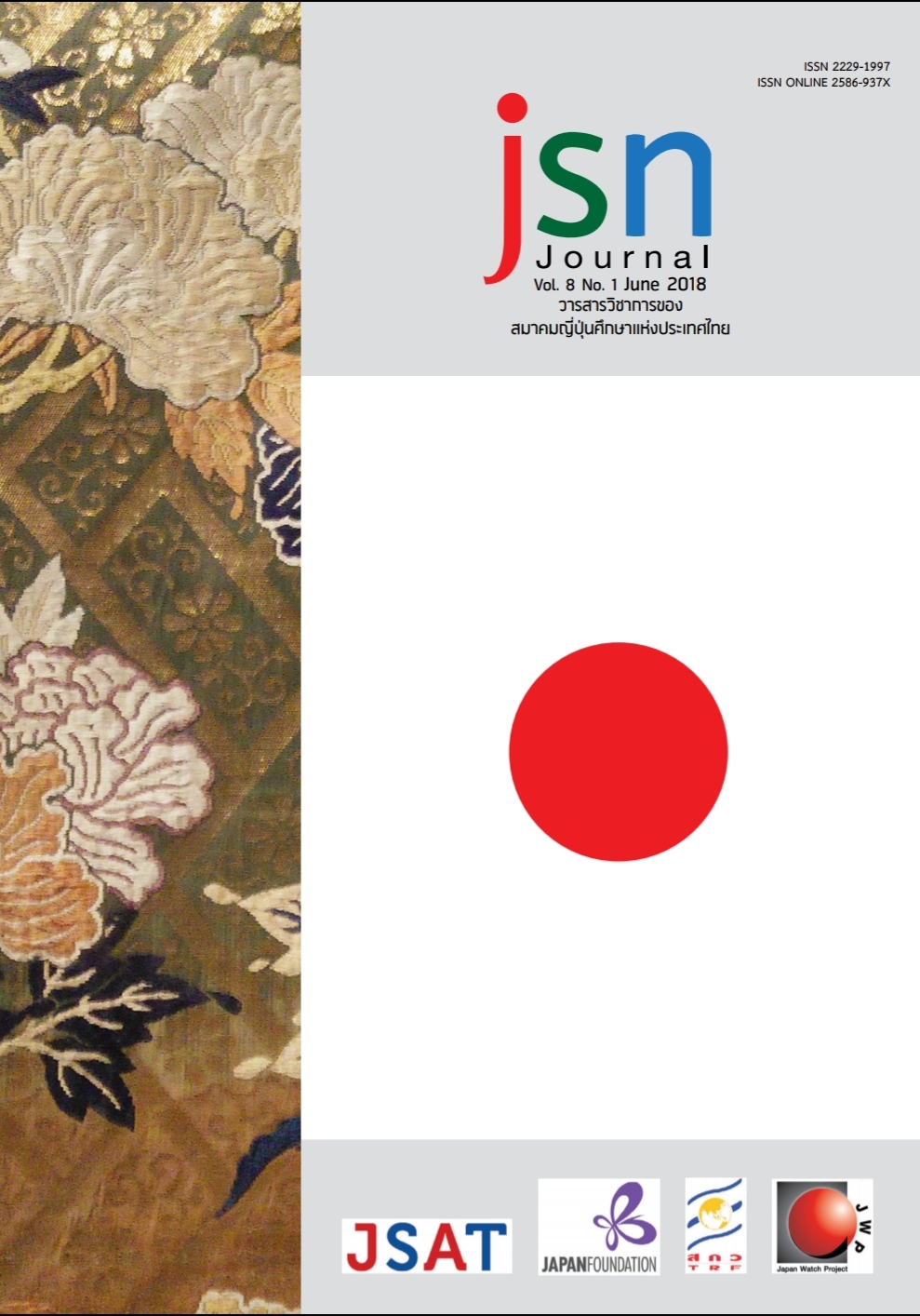Self-Disclosure in First-Encounter Conversations: A Comparative Study of Thai and Japanese
Main Article Content
Abstract
Self-disclosure is a crucial element in first-encounter conversations. This research compares and analyses two sets of 12 fifteen-minute semi-natural conversations, each between two female student participants of the same nationality, and at the same age or in the same year of study at university. Participants of the one set are of Thai nationality, and the other Japanese. The result displays that both Thai and Japanese participants exhibit a comparable level of reciprocal information exchanges. Names, years of study at university, and majors, which are inherently available pieces of information, are among the most revealed personal information. Non-reciprocal information disclosure, however, happens when one party possesses a piece of information not matched by the other party e.g. studying abroad, which renders reciprocal information exchanges unattainable. In addition, the study discovers characteristic patterns of self-disclosure unique to participants of each nationality. For example, A Japanese tends to provide pieces information parallel to ones acquired, while a Thai tends to reveal information relatively more concretely and voice negative opinions even in first-encounter conversations. This finding offers potential benefits to Japanese language education in Thailand.
Article Details
ข้อความและข้อคิดเห็นต่างๆ ในบทความเป็นของผู้เขียนบทความนั้นๆ ไม่ใช่ความเห็นของกองบรรณาธิการหรือของวารสาร jsn Journal
References
ยุพวรรณ โสภิตวุฒิวงศ์. (2559). การเปรียบเทียบโครงสร้างความรู้ (Schema) และกลยุทธ์การเลือกหัวข้อสนทนาเมื่อพบกันเป็นครั้งแรกของผู้พูดชาวไทยกับผู้พูดชาวญี่ปุ่น.วารสารอักษรศาสตร์, 45 (1), 1-46.
今田恵美 (2010).「『共-成員性』 の可視化手続きとしてのゴシップトーク―外国人留学生と日本人学生の初対面会話に注目して―」 『社会言語科学会 第26回大会発表論文集』214-217.
____ (2012). 「留学生と日本人学生の関係形成の様相―歓迎会における自己紹介場面データをもとに―」 『大阪大学言語文化学』 21, 3-15.
岩田祐子 (2015).「日・英語会話初対面会話における自己開示の機能」津田早苗・村田泰美・ 大谷麻美・岩田祐子・大塚容子(著)『日・英語談話スタイルの対照研究―英語コミュニケー ション教育への応用』(37-91)東京: ひつじ書房.
蔡諒福 (2011). 「社会人初対面会話における話題選択に関する一考察―日台中のデータをもとに―」『大阪大学言語文化学』20, 103-115.
斎藤正二(1995).「人生のみかた」大島建彦他(編). 『日本を知る事典』(897-958). 東京: 社会思想社.
全鍾美(2010).「初対面の相手に対する自己開示の日韓対象研究―内容の分類から見る自己開示 の特徴―」『社会言語科学』13 (1), 123-135.
張瑜珊 (2006). 「台日女子大生による初対面会話の対照分析一初対面会話フレームの提案を目指 して―」『人間文化論叢』9, 223-233.
唐瑩 (2015). 「初対面の相手に対する自己開示の中・日対照研究一中・日大学(院)生同士の 会話データをもとに―」『日中言語対照研究論集』 17, 107-122.
三牧陽子(1999).「初対面会話における話題選択スキーマとストラテジー一大学生会話の分析―」 『日本語教育』 103, 49-58.
____(2013). 『ポライトネスの談話分析―初対面コミュニケーションの姿としくみ』 東京:くろしお.
村上恵・熊取谷哲夫 (1995). 「談話トピックの結束性と展開構造」 『表現研究』62, 101-111.
ユッパワン,ソーピットヴッティウォン (2016). 「初対面の会話における話題転換の パターン―日タイ対照研究―」『日本研究論集』 13, 21-42.
楊虹 (2005).「中日接触場面の話題転換―中国語母語話者に注目して―」 『言語文化と日本語 教育』30,31-40.

